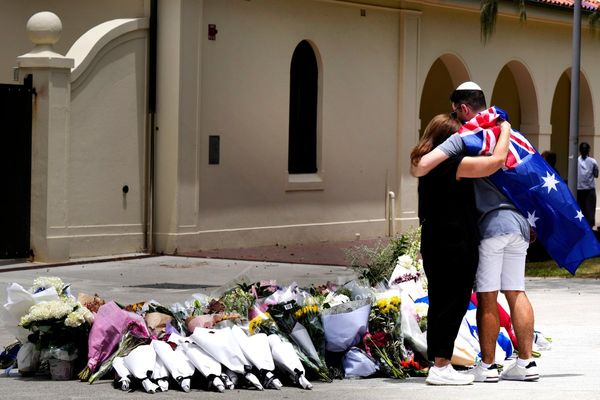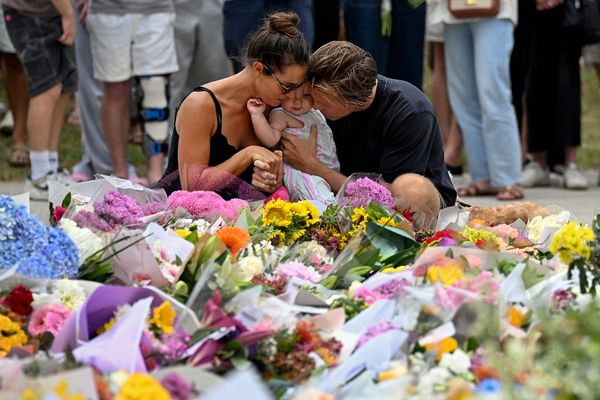
Almost a year ago, Russia began moving forces from Siberia and other regions to the border with Ukraine. With more than half of its land forces now poised for an attack, whether or not there will be a war with Ukraine hinges on the decision of Vladimir Putin, whose options range from a large-scale assault to a decision to hold his troops back or ultimately send them home.
At stake is a potentially devastating conflict, sanctions and economic hardship, and a verdict on the legacy of Putin, who has broadcast his decision to engage in brinksmanship with the west, saying that the tensions have a “definite effect” and should be maintained “as long as possible”.
Putin has been clear about what he wants: to reverse Nato expansion in Europe and a pledge that Ukraine will never join the alliance. But the main question remains how far he is willing to go to achieve that goal. And if he does de-escalate, does he have anything concrete to show for the last year?
In an unusual bit of play-acting on Monday, Putin invited his foreign minister, Sergei Lavrov, and defence minister, Sergei Shoigu, to the Kremlin for carefully scripted discussions on how it was all going.
“Sergei Viktorovich, what do you think? In your opinion, is there a chance to reach an agreement with our partners on the key questions causing our concerns?” Putin asked in a televised discussion that set the stage for the Kremlin’s next steps.
“We have said more than once that we warn against endless conversations on issues that need to be resolved today,” said Lavrov, repeating a warning that Russia would not be filibustered. “But still, probably as the foreign minister, I should say that there is always a chance.” He told Putin to continue holding talks with the west.
Shoigu, likewise, told Putin that a number of military drills were “ending”, signalling that Russia could pull back some of its heavy weaponry soon. “Summary of Putin’s meeting with Shoigu: exercises are ending, everyone is going home, Russia will not have a new war with Ukraine,” one Kremlin pool reporter wrote after the meeting.
The reality on the ground is not so encouraging. Open source data has continued to show aircraft and helicopters deploying near the border and tanks and artillery leaving staging areas for positions where they would be poised for an attack. And much of the weaponry that the Kremlin has put at Ukraine’s borders is not officially involved in any exercises.
Still, the televised meetings with his top officials were a rare nod towards de-escalation for Putin, who has explained little to the public about this crisis and appears to be isolated even from his own ministers in his decision-making.
At the Kremlin, Lavrov and Shoigu were both forced to sit at the end of a long conference table, part of the draconian anti-Covid measures that the Kremlin has employed in recent months (including when Emmanuel Macron visited for talks last week). The indication was that these were formal meetings with Lavrov and Shoigu meant for television cameras rather than real consultations.
The timing coincides with what western officials have warned is a crucial week on the Ukrainian border, with Russia ready to begin offensive operations “at any time”.
US media have reported that Joe Biden told Nato allies that Russia could launch an attack beginning on Wednesday, although he claimed Putin had not given the order yet. (Russian media have ridiculed those claims, as well as US allegations that the Kremlin had plans to install an occupation government and film a propaganda video of a “false-flag” attack as a casus belli.)
If Russia is preparing for a large war, it does not appear to have prepared its own public for it either. Updates on Ukraine often run in the middle of news broadcasts, and most media have not run the kind of hysterical, jingoistic programming that dominated the airwaves in 2014.
There are some exceptions. Margarita Simonyan, the hawkish head of RT, has regularly advocated for intervention and incorporation of the Russian-controlled separatist areas. “Russia cannot not stop this war,” she said during a nationally broadcast television programme. “What are we waiting for? When there are concentration camps? When they start gassing their own population?”
The mood in Kyiv has also been one of calm and lack of panic. But western allies led by the United States have withdrawn their diplomatic staff, urged their citizens to leave, and some airlines have said they will stop flying over the country because of the potential dangers. Kyiv has been forced to launch a $600m (£444m) insurance fund to ensure that air travel to the country continues.
The Ukrainian president, Volodymyr Zelenskiy, and other Ukrainian officials have warned that a key goal of the Russian buildup is to foment internal tensions, put pressure on the economy, and convince Ukraine of its precarious situation as Moscow seeks to reverse its drift to the west.
The Russian business daily Kommersant said on Monday that the last three months of “diplomatic and security pressure” had brought some rewards: increased pressure on Ukraine from the west over the Minsk accords, a recognition of Russia’s willingness to fight any future Nato expansion, and a queue of top western politicians to meet and speak with Putin.
But the pressure “has had a multitude of negative effects”, the newspaper added, noting that while the pluses existed “only on paper”, the negative effects had already become a reality.
Those have included a revitalisation of Nato, with deployments of US and other troops to eastern Europe, as well as direct deliveries of lethal arms to Ukraine, such as the thousands of anti-tank missiles delivered by the UK.
Responding to a question from the Guardian, the UK defence secretary, Ben Wallace, said that Shoigu had complained specifically about those deliveries last week when the pair met.
“No matter how many weapons we have delivered, they are dwarfed by the scale of the forces on the other side of the border,” Wallace said he replied. They would only play a role, he added, “if you were defending yourself from an invasion”.







